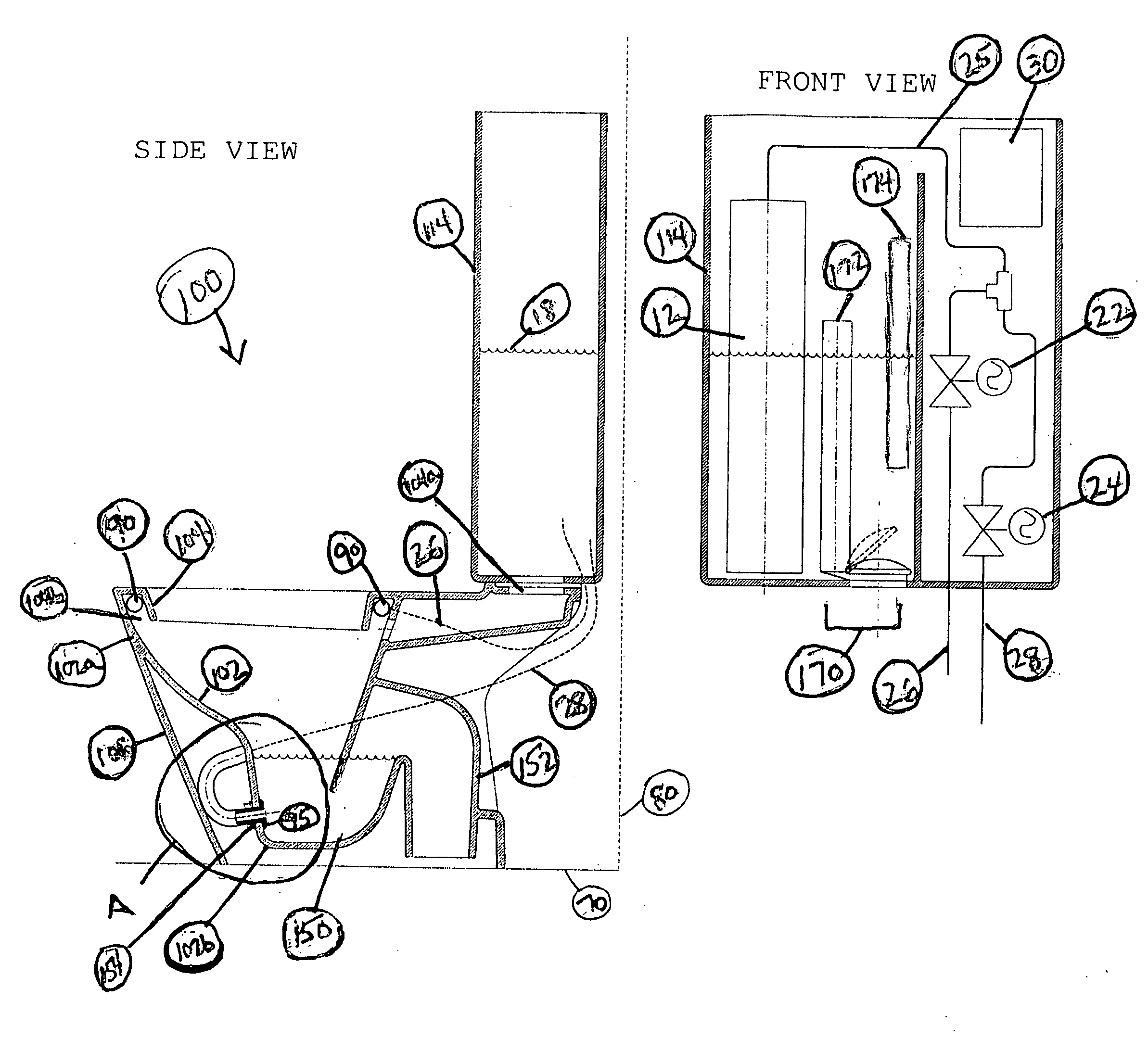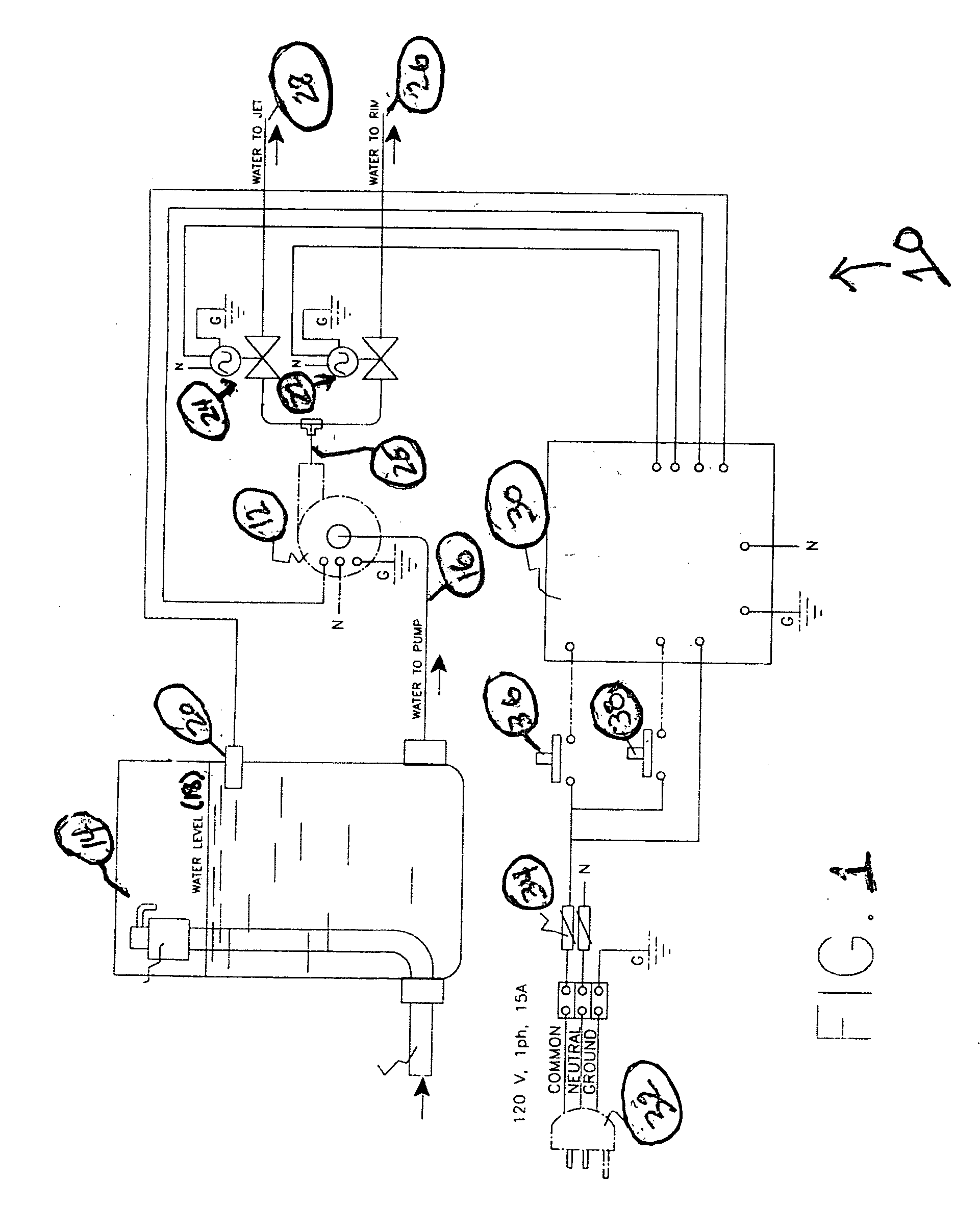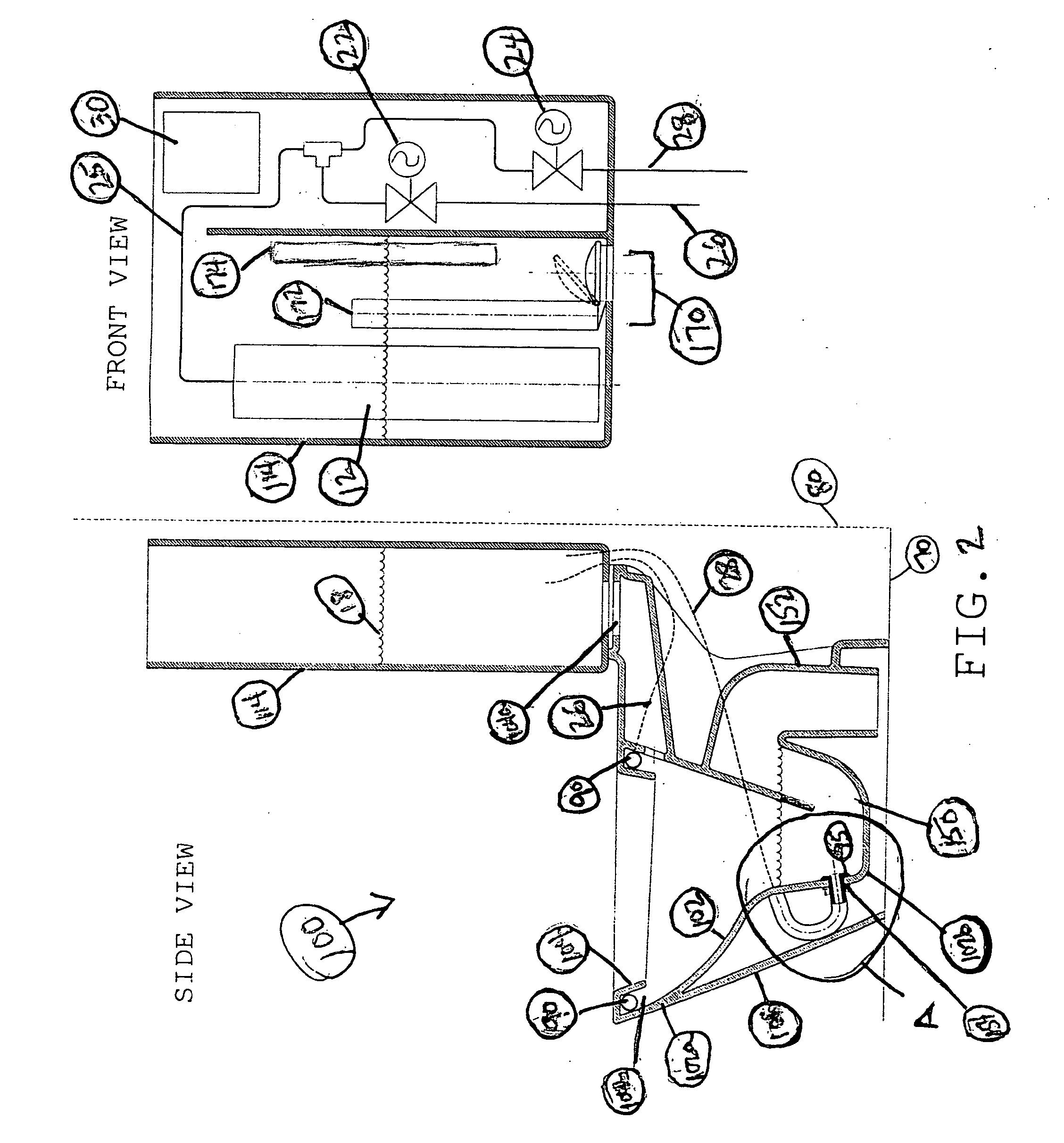Method of operating a multi-phase, high energy flushing system for optimal waste removal and bowl cleaning within a prescribed water consumption range
a flushing system and high energy technology, applied in the field of toilet having operation, can solve the problems of affecting the amount and quality of suitable water, impede the ability to achieve effective flushing, and excessive consumption of potable water, and achieves the effects of improving flushing and cleaning performance, strong flushing performance, and convenient installation, maintenance and transportation
- Summary
- Abstract
- Description
- Claims
- Application Information
AI Technical Summary
Benefits of technology
Problems solved by technology
Method used
Image
Examples
example
[0083] A prototype toilet was constructed employing the above described concepts in a siphoning toilet of configuration such as toilet 500 shown in FIG. 6. A clear plastic bowl was constructed with a 2¼″ water seal and a water spot of about 10″×8½″. Static water volume in the bowl comprised about 0.53 gallons (2 liters). The exhaust pipe assumed a constant diameter of about 2⅝″ with a shape identical to that disclosed by Applicant's U.S. Pat. No. 6,728,975 and Applicant's pending application Ser. No. 10 / 231,977 (the entire contents of both disclosures being incorporated by reference herein). The rim was provided with six spray nozzles positioned equidistantly along the periphery thereof. A pair of commercially available solenoid valves was provided for the rim diverter means and the jet diverter means. The storage tank was not under line pressure.
[0084] A pump was selected from one of a plurality of commercially available pumps such as pumps sold by Granger having the following par...
PUM
 Login to View More
Login to View More Abstract
Description
Claims
Application Information
 Login to View More
Login to View More - R&D
- Intellectual Property
- Life Sciences
- Materials
- Tech Scout
- Unparalleled Data Quality
- Higher Quality Content
- 60% Fewer Hallucinations
Browse by: Latest US Patents, China's latest patents, Technical Efficacy Thesaurus, Application Domain, Technology Topic, Popular Technical Reports.
© 2025 PatSnap. All rights reserved.Legal|Privacy policy|Modern Slavery Act Transparency Statement|Sitemap|About US| Contact US: help@patsnap.com



